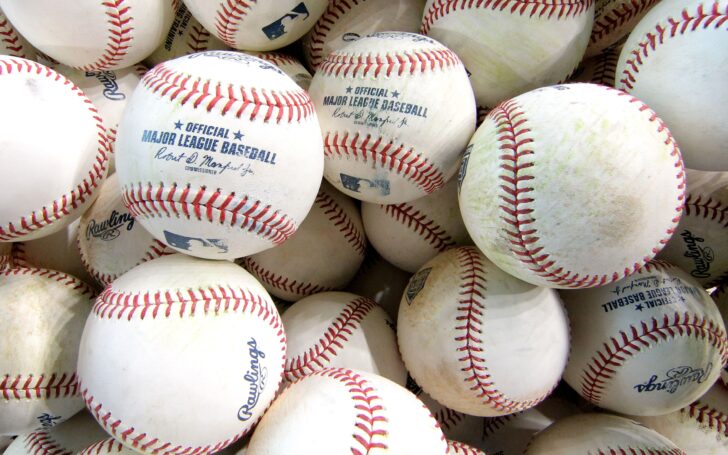MLB pitchers were correct after all.
The MLB confirmed the growing suspicion among pitchers that changes to baseballs have contributed to the spike in home runs over the last three seasons, The Washington Post reported Thursday evening. However, the league failed to determine why those changes have happened or how they contributed to the home run surge.
The 2017 season saw hitters break a nearly two-decade long record of home runs hit in a season set at the peak of the steroid era in 2000. Last season, players hit 6,105 home runs, handily beating the previous record of 5,693.
Following last year’s World Series, during which the Houston Astros and Los Angeles Dodgers clubbed a record 25 homers, pitchers became more outspoken about their beliefs that the baseballs are juiced.
The data, however, goes back to the middle of the 2015 season to explain the uptick in long balls. Despite these findings, though, the MLB concluded differently.
An in-depth report from FiveThirtyEight published at the beginning of spring training this year showed many of things that Commissioner Rob Manfred and scientists do not believe contribute to the increase in home runs. Using research from “ESPN Sports Science” that showed subtle changes to baseballs used after the 2015 All-Star Game, FiveThirtyEight investigated what was happening at the core.
Independent research concluded that there were consistent changes in the weight, chemical composition and density of the core of baseballs used before and after the All-Star Game. It’s not the weight itself that accounts for the home runs – balls weighed half a gram less, causing them to travel only six inches further.
However, the aerodynamics and bounciness of the new balls did have significant differences on exit velocity and distance.
In short, the data showed that the core of the baseball – which consists of a cork center surrounded by three different layers of rubbers – was 40 percent less dense in the new baseballs. This makes the baseballs bouncier and adds three feet of distance off the bat.
Independent research also proved that baseballs became less air resistant, a presumed result of a slicker ball with lower seams. This change could add an additional five feet of carry. Combining all the factors together, FiveThirtyEight concluded that the potential increase of 8.6 feet of carry would lead to a 25 percent increase in the number of home runs.
This research was combined with three separate academic laboratories to lead to the conclusion that the baseball has physically changed.
Despite these findings, Manfred and the MLB found differing results in their research of the baseballs. A 10-person committee consisting of data specialists and scientists formed by Manfred concluded that a “change in the aerodynamic properties” of the baseball at least partially contributed to the surge in home runs.
Their results showed similar findings to FiveThirtyEight in that the balls experienced reduced drag, allowing them to travel further.
However, they were not able to conclude why that reduced drag happened and contradicted some of FiveThirtyEight’s findings, saying that there were no changes to size, weight, seam height or bounciness of the ball.
The MLB concluded that the home run surge “is not due to a livelier, ‘juiced’ ball, or any change in batter or pitcher behavior.” FiveThirtyEight and research from other scientists suggests otherwise, though.
In 2018, the home run rate is slightly down from last season’s record-breaking numbers (1.26 per game compared to 1.12). Still, that is a significant increase from 2014 (0.86), the last year baseballs were not altered.



